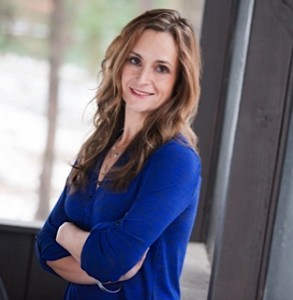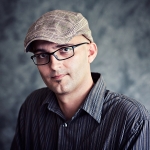The Inquisitor
A conversation between Pursuit contributor Kevin Goodman and former CIA Clandestine Service operative Lindsay Moran
In Part 2 of our series, Moran discusses the tradecraft she learned in CIA training, the surprising truth about a covert operative’s daily work, and how she uses her spy skills in everyday life.
 In the first article of this series, I introduced Lindsay Moran, a former CIA clandestine service officer who wrote a book about her experiences: Blowing My Cover: My Life as a CIA Spy. That article introduced readers to her personal history, how it motivated her to become a spy for the nation’s clandestine service, and Lindsay’s perception of CIA culture.
In the first article of this series, I introduced Lindsay Moran, a former CIA clandestine service officer who wrote a book about her experiences: Blowing My Cover: My Life as a CIA Spy. That article introduced readers to her personal history, how it motivated her to become a spy for the nation’s clandestine service, and Lindsay’s perception of CIA culture.
In this article, Lindsay cracks open the CIA agent stereotype to present an accurate description of what an undercover clandestine service officer actually does, alongside the more important aspects of spy tradecraft that such officers must master.
CIA Clandestine Service Officer: Job Description
KEVIN: What do you think are some of the public’s common misperceptions about being a CIA espionage officer?
LINDSAY: One of the first questions I always get asked: “Did you ever kill someone?”
KEVIN: That’s sad. (laughing)
LINDSAY: Yeah, there’s this idea of CIA operatives as rogue assassins. But what we do is far more mundane. You’re more like a salesperson, because what you’re doing is showing up in a foreign country, making a life for yourself, and basically going out and trying to meet people—foreigners who have access to information—and then selling those people on the concept of committing espionage.
You’re not out to kill people…You’re trying to get them to do something that you—as a patriot—would never do yourself.
You’re not out to kill people, like you see in the movies—prick them with a poisoned tipped umbrella or anything. You’re trying to develop a relationship with that person, to ultimately recruit that person, to persuade him or her to give up secret information—typically in exchange for money. It’s a very difficult thing to do, in fact. It would be a lot easier to kill someone as a sniper or assassin than to recruit a human being to commit espionage. You’re trying to get them to do something that you—as a patriot—would never do yourself.
The Lowdown on Spycraft
 KEVIN: So is the training mostly focused on persuading people?
KEVIN: So is the training mostly focused on persuading people?
LINDSAY: A lot of it is. When I went through it, there were two aspects to the training. One aspect was paramilitary training. From what I have heard, during the buildup to Iraq and Afghanistan, the CIA took the paramilitary aspect out of the training because they were putting so many neophyte spies through that there simply wasn’t time for it. But that was actually the most fun—I wouldn’t say glamorous, but most exciting part of our training.
You learn how to drive cars—and boats—really fast. You learn land navigation, hand-to-hand combat, jumping out of airplanes, infiltration and exfiltration; and there was a simulated POW camp experience that was incredibly real. So that was the really fun stuff, sort of “extreme sporting adventure,” in a way. But it really had little to do with what our actual jobs were going to be like.
After the paramilitary training, we had a short break and then went back to the Farm for tradecraft training. That’s where you learn the nuts and bolts of being a spy: how to use disguises, how to travel in alias, how to detect surveillance—which is critical. If you can’t tell if someone is following you, you’re going to get yourself thrown out of the country at the very least, and your asset arrested and possibly killed.
A lot of tradecraft training focused on how to convince people to commit espionage. It’s basic psychology. I should add that I’m applying to get a master’s in industrial and organizational psychology. So much of what you do as a CIA operative is psychology-based. On the most basic level you’re acting—almost—as a clinical psychologist for your assets. They come to you with their problems, and you have to listen, and talk them through their issues.
You have to figure out what motivates people…this is the information you will use to manipulate them to get what you want: secret information.
You also have to figure out what motivates people, and what their vulnerabilities are. Because this is the information you will use to manipulate them to get what you want—which is secret information. So working at the Agency really solidified my interest in psychology. I’m also tremendously fascinated by the psychology of the organization itself, which is a weird one.
KEVIN: OK, so you didn’t really use any of the paramilitary training such as driving through barricades?
LINDSAY: I have used some of that training in everyday life. For instance, I feel like I have a much better sense of direction than my husband. I don’t know if that’s innate or from having done training in land navigation, but it seems like when we go on hikes, he’ll get us incredibly lost, and I always have a very good sense of where we are. I also feel that I’m a much better driver; in fact, during the evasive driving part of our training—what’s called the crash and burn—I received the “most improved” award.
KEVIN: (laughing) Yeah, I read about that.
LINDSAY: I even use some of the training in my life now. I should add that I never needed to carry a weapon as an operative out in the field, but I was glad I had the weapons qualification and training with firearms. Sadly, I feel like that is just a good skill to have no matter what.
KEVIN: You talked about surveillance detection and taking one and two hour surveillance detection routes—what is the theory there? What exactly are you doing when you do a surveillance detection route?
LINDSAY: It’s kind of funny because in the movies, if the spy thinks he’s being followed, he drives like a bat out of hell to lose the tail. The reality is far different. You really want to bore the people following you, so that they don’t suspect you’re a spy.
Surveillance detection is harder than it sounds. Again, in the movies, if someone is following you, they are directly behind you. Sophisticated surveillants are not going to be directly behind you. They’re going to have a team; they’re going to have a “box” of vehicles surrounding you; they’ll also have static surveillance; they’ll change cars; they’ll change license plates; they’ll change clothes if they are pedestrians. That’s why we spent so much time training to be able to tell if we were being followed.
In the movies, if the spy thinks he’s being followed, he drives like a bat out of hell to lose the tail … Sophisticated surveillants are not going to be directly behind you.
We had courses dedicated only to surveillance detection, but surveillance detection training was also incorporated into ALL of the training. They teach you tricks, such as making left-hand turns so you can see if there are cars behind you. The theory behind a surveillance detection route is: Do you see the same person or the same vehicle over distance and time? The ideal surveillance detection route will take you into rural areas and into congested urban areas, and you’re basically driving around to make sure you’re not being followed.
Now, if you are being followed, you don’t want whoever is following you to know that you’re doing a surveillance detection route. You do what are called “cover stops”—if you drive twenty-five miles out to some rural area, you’d better have a reason. It should not be, say, a 7-Eleven, but it could be a tack store for equestrians or a bait and tackle shop for fisherman—someplace where there’s a legitimate reason that you would have driven that far.
If you do detect surveillance, obviously, you abort the mission. You don’t meet with an asset or agent or do anything operational such as put a chalk mark on a mailbox, water-fountain, or whatever—if you’re being observed or followed. You’re supposed to convince anyone following you that you’re not a spy.
Kevin: You’re just a boring diplomat, say.
LINDSAY: Exactly.
See Part 1: A Former CIA Operative Reveals Why She Became a Spy
Coming soon: Part 3 of our Q&A with Lindsay Moran, in which she discusses CIA culture: the bureaucracy and paperwork, and the high- and low-tech tradecraft involved in the life of a modern spy.
About the author:
 Kevin Goodman is a freelance researcher and writer. He has a master’s degree from Skidmore College with a focus in cognition, culture, and communication. He also has a graduate certificate in criminology from the University of Massachusetts, Lowell.
Kevin Goodman is a freelance researcher and writer. He has a master’s degree from Skidmore College with a focus in cognition, culture, and communication. He also has a graduate certificate in criminology from the University of Massachusetts, Lowell.
His primary academic interest is the psychology of belief and its interrelationship with deception. Kevin enjoys making wine, being outdoors and exploring whatever he finds curious. He lives near Bloomington, Indiana, with his wife and two daughters.


